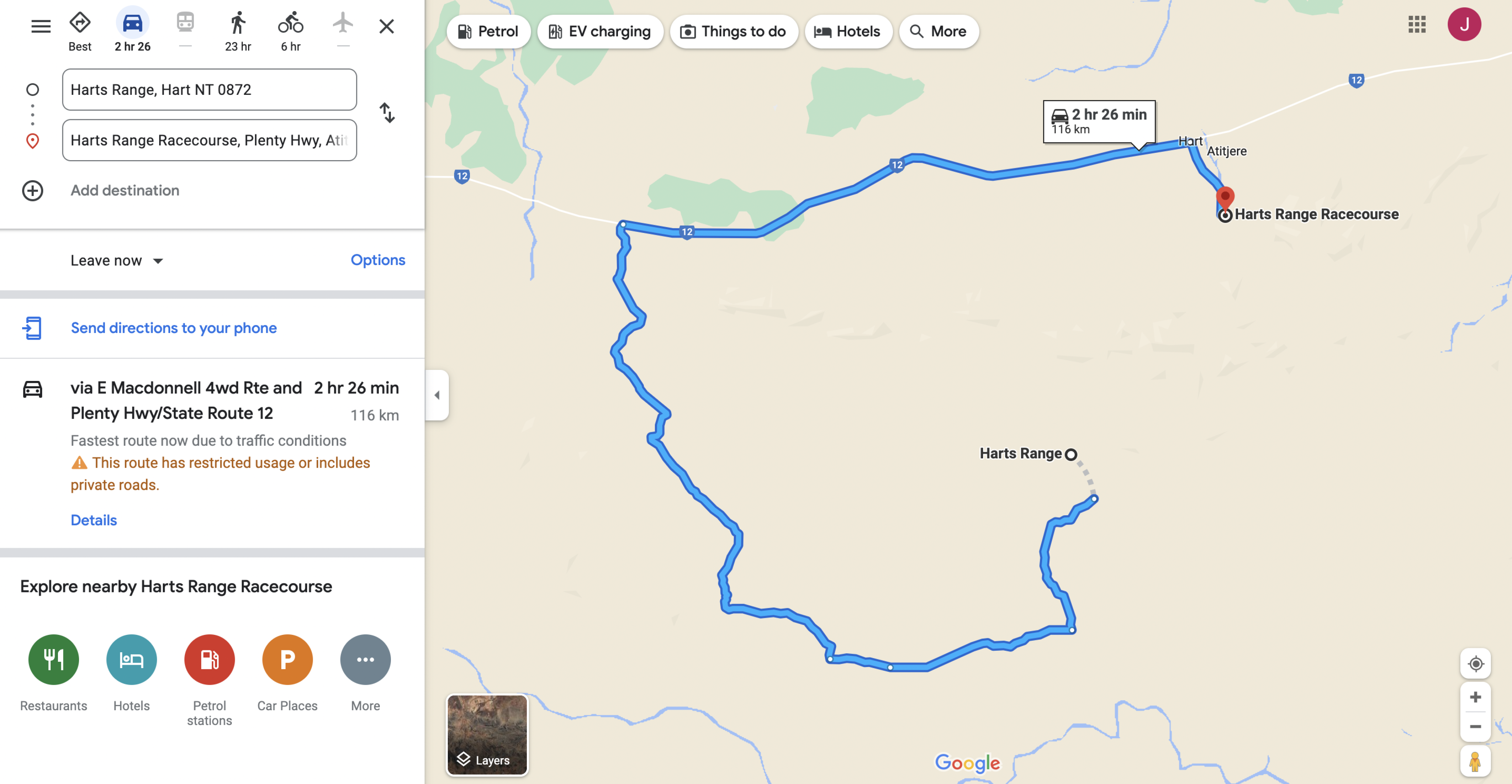
Last week, a 22-year old nurse from Alice Springs caught a lucky break after stranding her car following Google Maps to the wrong location.
Snapshot
- Young nurse found by police after becoming stranded in the Northern Territory
- Google Maps led driver to the wrong Harts Range location
- A cautionary tale to double-check directions and always carry emergency supplies
With no reception, satellite phone or personal locator beacon, the 22-year-old took refuge in her car for the night after sending an SOS text 220km from her Alice Springs home, according to ABC News [↗].
Police said the driver was lucky she owned a new phone, such as an Apple iPhone 14, allowing her to communicate with emergency services via satellite with no phone reception.
The nurse had an esky packed with 18 beers and nothing else, as she was on her way from Alice Springs to a rodeo held at Harts Range Racecourse.
She had inputted Harts Range, which the navigation app had taken to mean the mountain ranges itself, rather than the township where the rodeo was being held.
Speaking to ABC News reporters, Senior Sargeant Michael Potts from Alice Springs police said to find the correct destination, she would have needed to input 'Harts Range Racecourse', or its Aboriginal place name "Atitjere".
Alice Springs police said they wouldn’t have found the young nurse were it not for the owner of Ambalindum Station lending the use of his light plane to aid search efforts.

A cautionary tale for technology users
Google Maps and other web-based navigation systems work flawlessly, provided there's a stable internet connection and up-to-date road information.
A Google spokesperson told ABC News it would speak with "local and authoritative sources" to resolve this specific naming situation.
"We use a variety of sources to get the most accurate and up-to-date information on the map," said the Google spokesperson.
Google uses manual and automated techniques for mapping, but it’s not always infallible – especially in a large country such as Australia.
Sergeant Potts recommended that those travelling in the outback should always carry a precautionary slab of water as well as a locator beacon, satellite phone or emergency position indicating radio.
It’s also a good reminder to double-check destinations where possible by cross-referencing with a more old-school method, such as a paper map, or asking a local for directions to avoid the worst happening.


COMMENTS